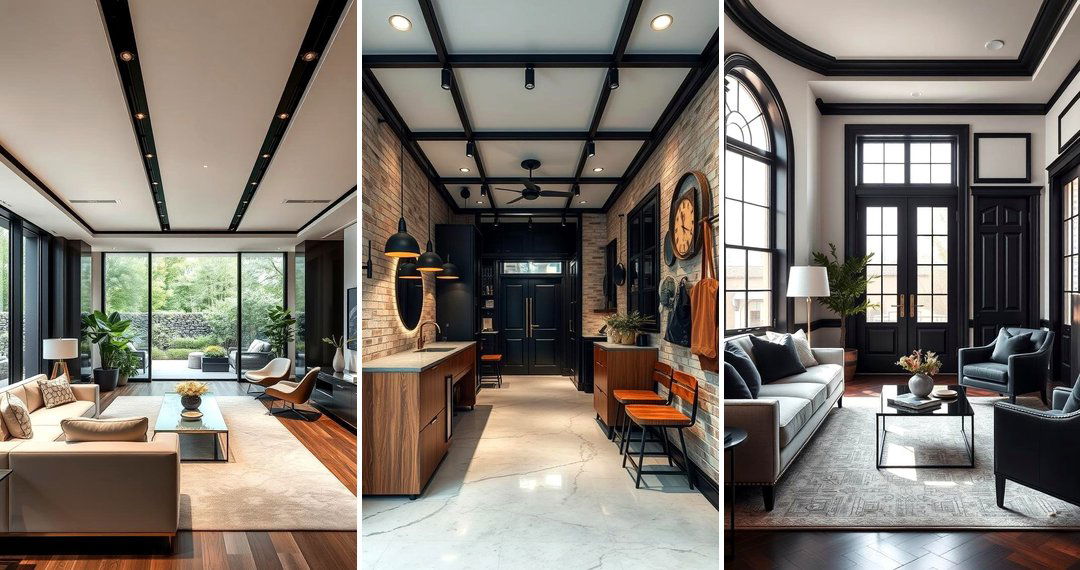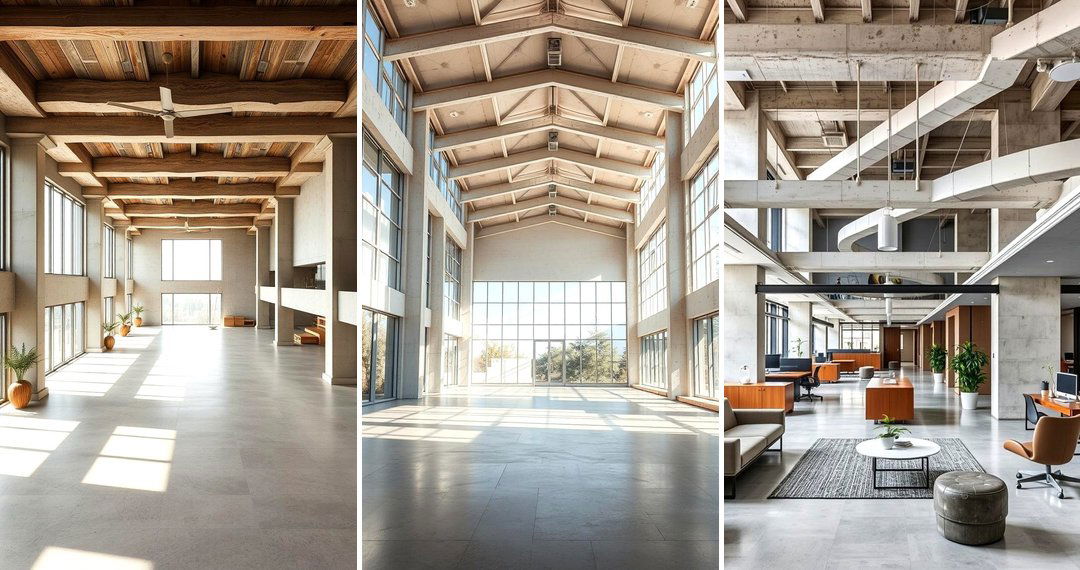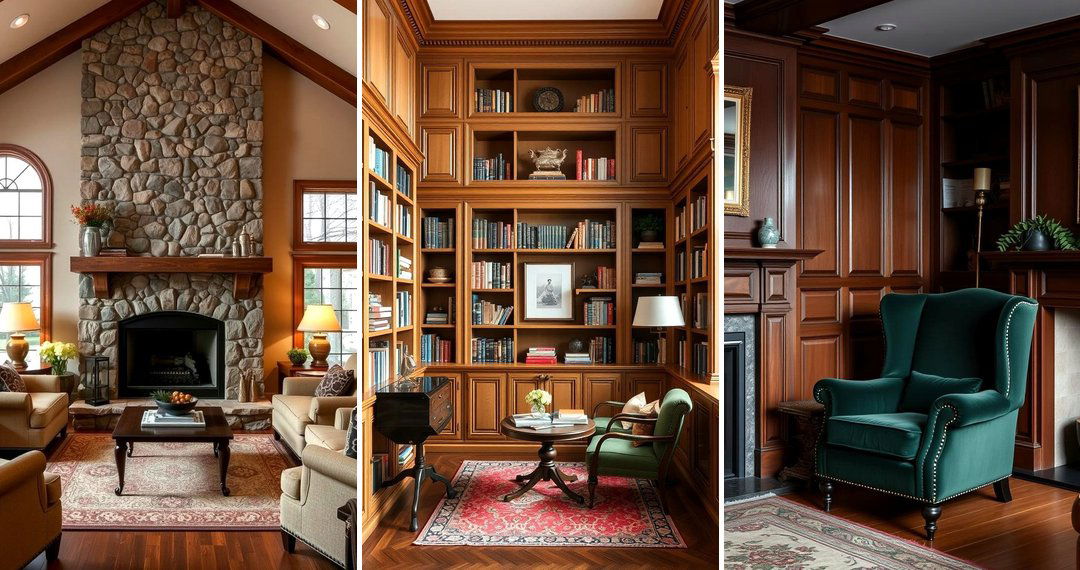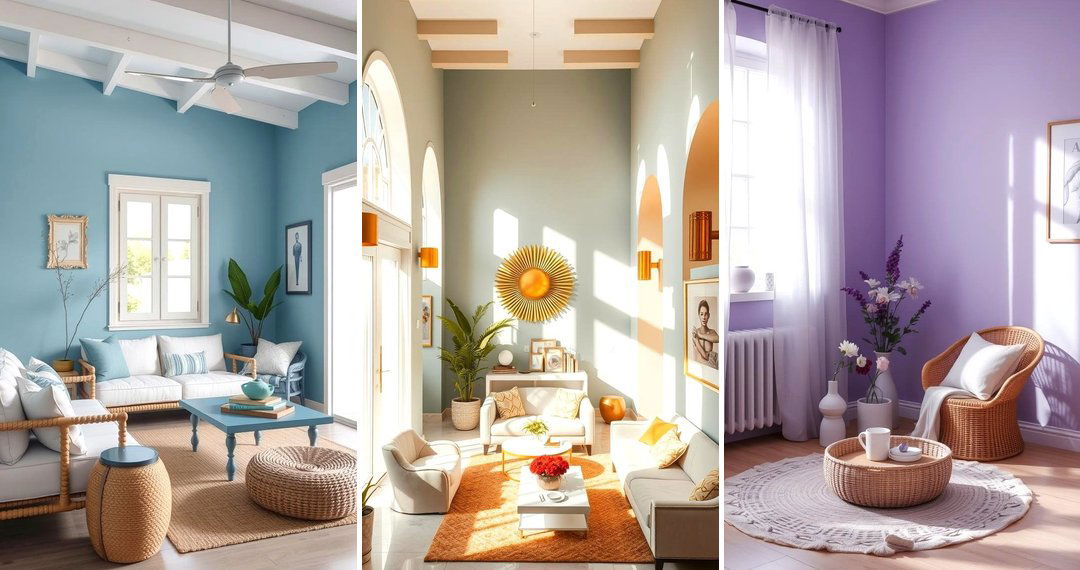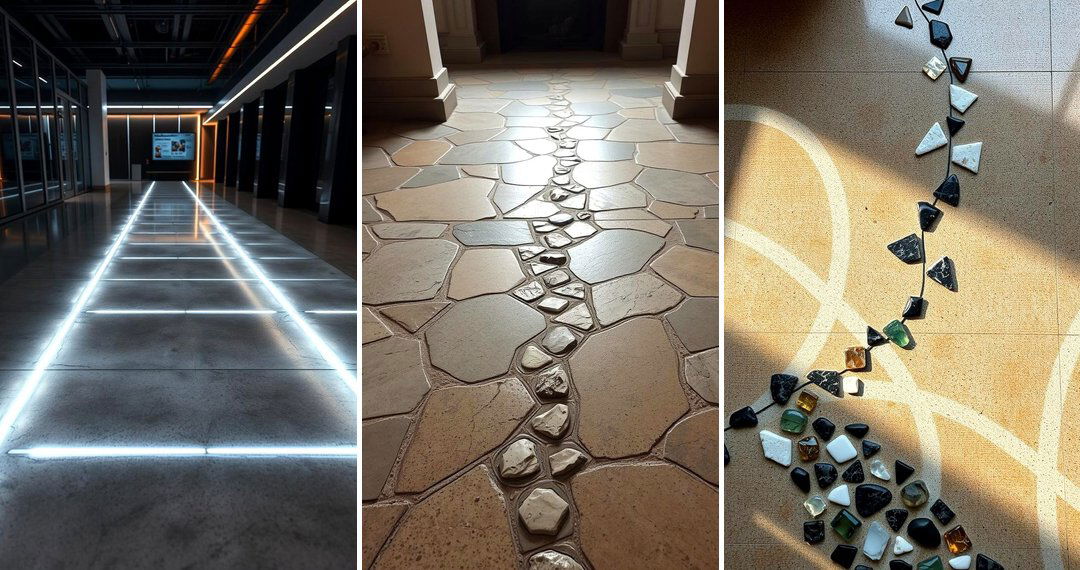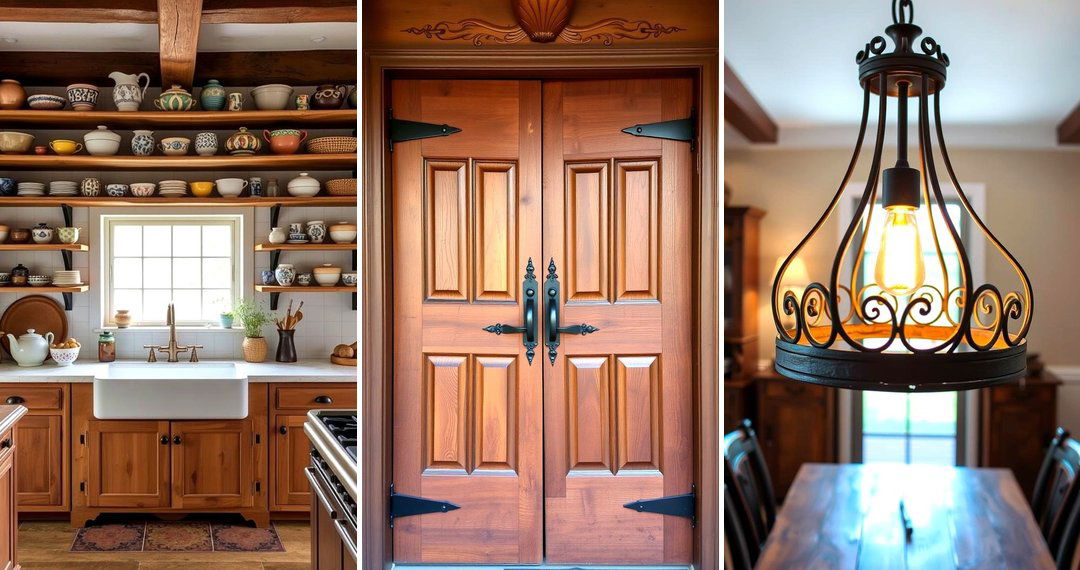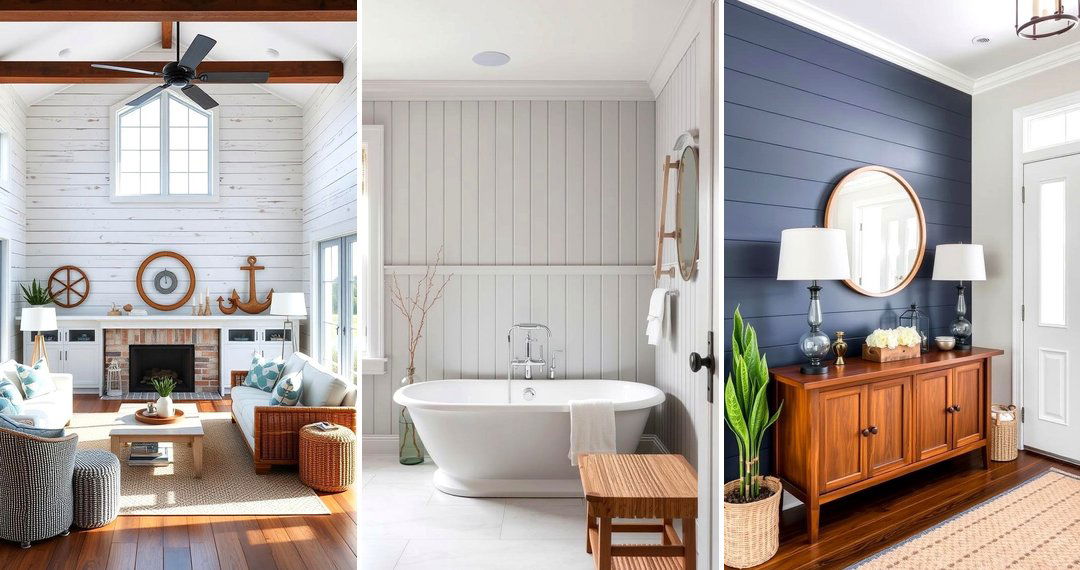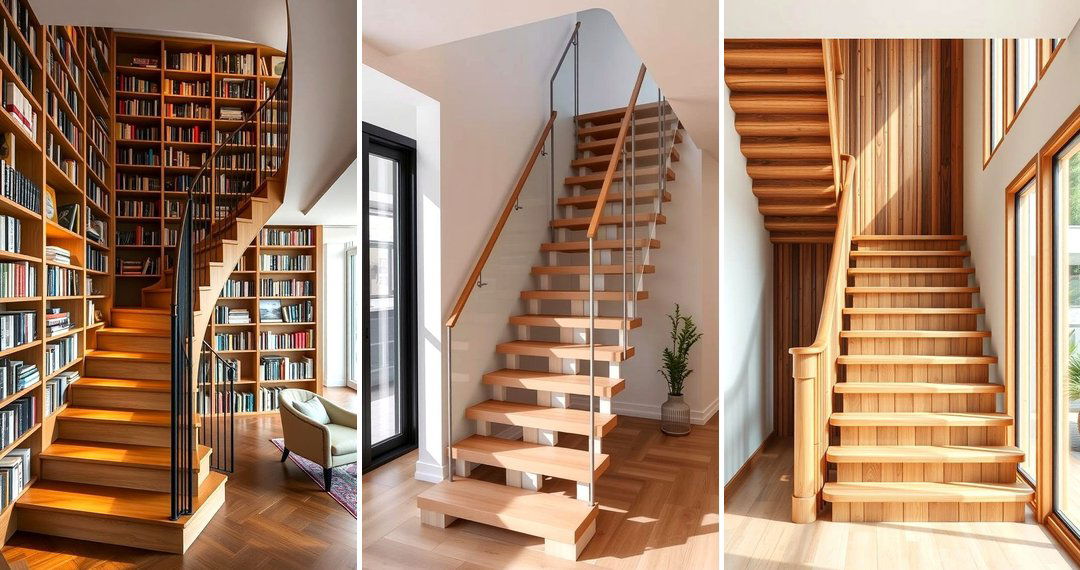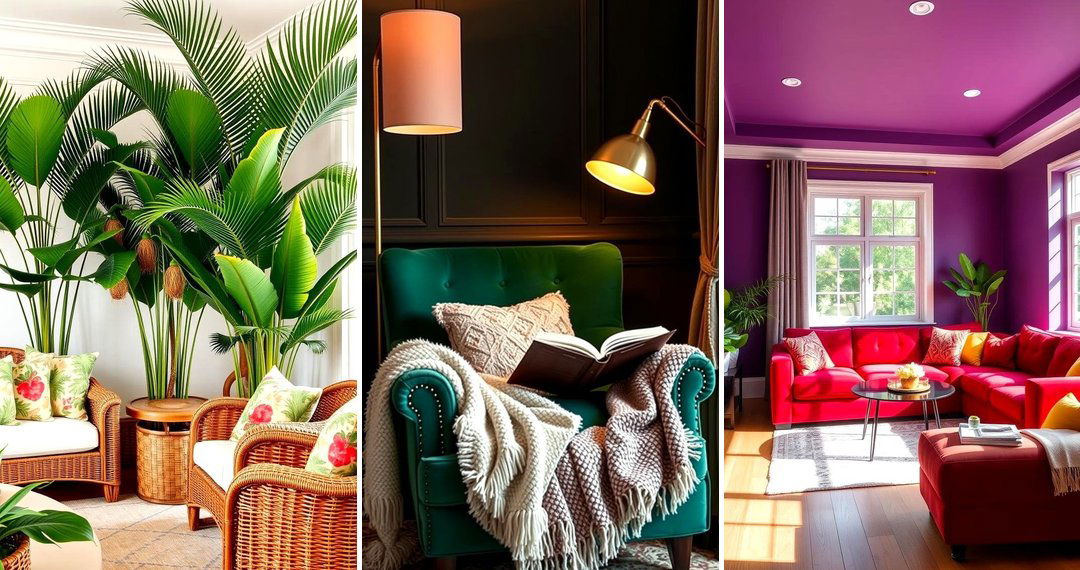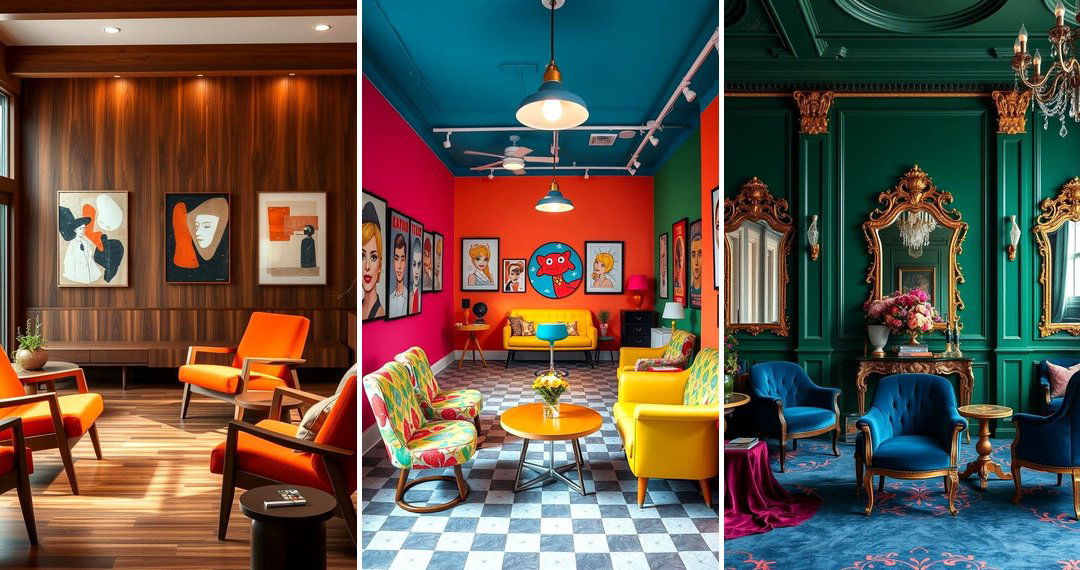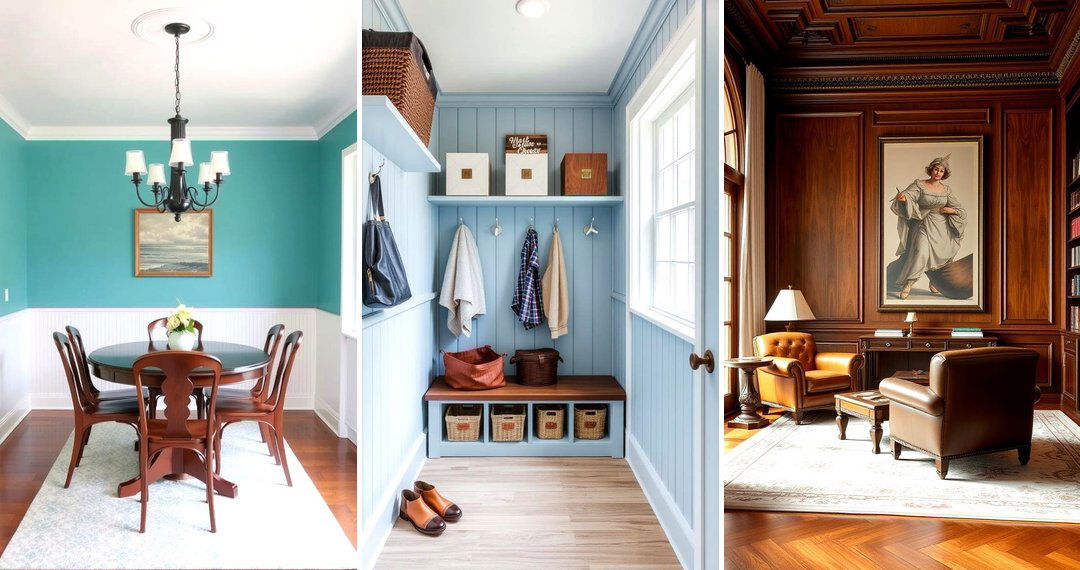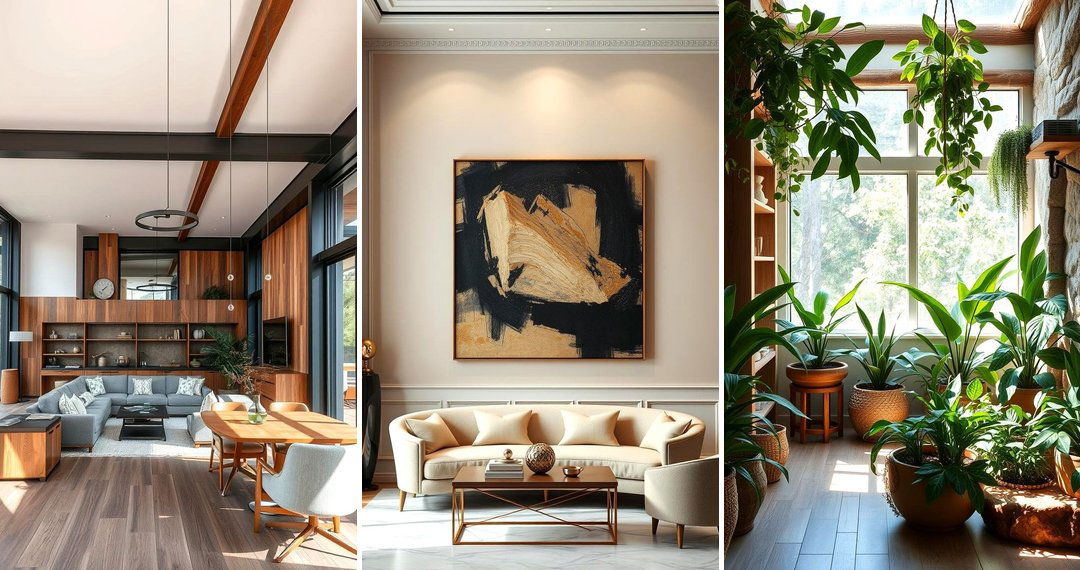Minimalist interior design has gained immense popularity for its clean, simple, and functional approach to creating stylish living spaces. The core philosophy of minimalist design is centered around the idea that "less is more," emphasizing simplicity, functionality, and open spaces. By embracing a minimalist approach, you can create a calming environment that promotes clarity, reduces stress, and enhances your quality of life. Whether you are looking to declutter your home, refresh a room, or embrace the beauty of simplicity, there are countless minimalist design ideas to explore. In this guide, we’ll take you through 24 creative ways to transform your home into a tranquil sanctuary while maintaining a modern, chic aesthetic. Continue reading to discover how minimalist interior design can elevate your living space.

1. Neutral Color Palette for Calmness

A neutral color palette can instantly create a serene atmosphere in any room. Soft whites, creams, greys, and taupes help open up space, making it feel larger and more airy. These shades evoke a sense of calm and simplicity, setting the tone for the rest of your décor. Opting for muted tones on walls, furniture, and accessories allows other design elements, such as texture or lighting, to shine. This creates a harmonious and balanced environment, where every element complements the overall aesthetic without overwhelming the senses.
2. Declutter with Functional Storage Solutions

In minimalist design, less is more, and that often means reducing clutter. One of the best ways to achieve this is by incorporating functional storage solutions. Hidden storage like built-in cabinets, under-bed drawers, or multi-purpose furniture pieces can help keep your space organized and tidy without sacrificing style. By storing away everyday items, you can maintain a clean, open look, allowing the beauty of your design to take center stage. When everything has its place, your home will not only look neat but also feel more peaceful.
3. Embrace Natural Light

Natural light is one of the most effective ways to enhance the minimalist aesthetic of any room. Large windows, open spaces, and light-colored walls allow natural sunlight to flood the space, creating a warm and inviting atmosphere. The more natural light you allow into your home, the more spacious and uplifting your environment will feel. Consider using sheer curtains or blinds that can be easily opened to let in sunlight. Natural light also has the added benefit of boosting your mood and energy levels, contributing to a healthier, happier home.
4. Incorporate Simple, Clean Furniture

When it comes to minimalist interior design, furniture should serve both a functional and aesthetic purpose. Choose pieces that have clean lines, simple shapes, and neutral colors. Avoid overly ornate or bulky furniture, as it can disrupt the sleek, uncluttered look of the space. Instead, opt for functional pieces like low-profile sofas, streamlined coffee tables, and simple dining chairs that add elegance without overpowering the room. This ensures that each piece fits into the minimalist vision while offering practicality and comfort.
5. Use Statement Pieces Sparingly

Minimalism doesn’t mean leaving your space devoid of personality. However, it’s important to be selective with the statement pieces you incorporate into the design. Choose a few standout items, such as a striking piece of artwork, a unique light fixture, or a bold piece of furniture that captures attention. These elements can serve as focal points in the room, drawing the eye without overwhelming the space. By limiting the number of statement pieces, you maintain the minimalist ethos while still adding character and interest to your home.
6. Open Floor Plans for Flow

An open floor plan is an excellent way to embrace minimalist design. The absence of walls and barriers creates a sense of freedom and openness in your home. This layout encourages a natural flow between rooms and allows for better organization of furniture and other design elements. When rooms are interconnected, it creates a more spacious feeling and allows for greater flexibility in how you use your space. Open floor plans also promote easy movement and accessibility, making your home feel more connected and inviting.
7. Choose Simple, Monochromatic Textures

Texture plays a significant role in minimalist interior design, but it’s important to keep it simple and consistent. Opt for natural materials like wood, stone, linen, and cotton in a monochromatic or neutral color palette. For instance, choose a linen sofa with soft woolen throw blankets or a wooden coffee table with a stone sculpture. These textures add depth and warmth to your home while maintaining the clean, uncluttered aesthetic that defines minimalism. Simple textures help create a sense of harmony and balance without drawing too much attention to any one element.
8. Maximize Vertical Space
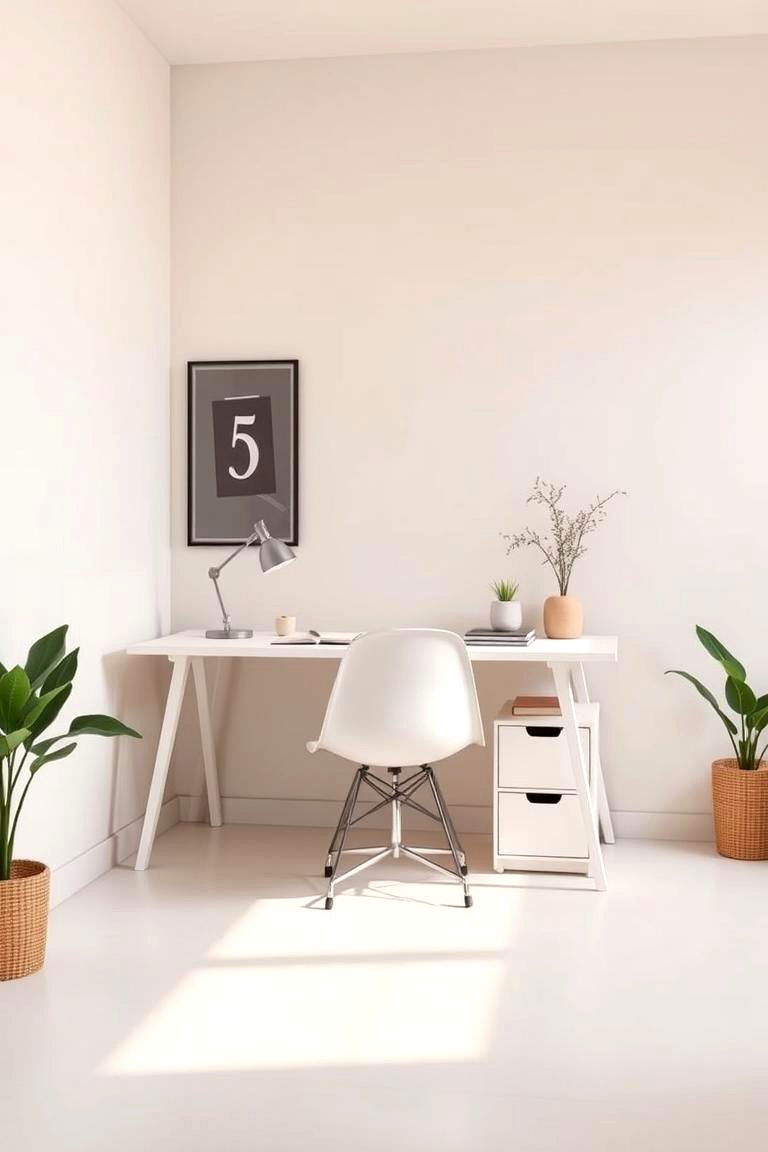
Maximizing vertical space is a great way to keep your home feeling spacious and organized while maintaining a minimalist design. Tall shelves, wall-mounted lighting, or artwork hung higher on the walls can draw the eye upward, creating the illusion of height and space. Vertical storage solutions can also help minimize clutter on the floor, making the room feel less crowded. By using your vertical space wisely, you can maximize storage, display artwork, and create a sense of openness, all while maintaining a sleek and clean look.
9. Keep Accessories to a Minimum

In minimalist interior design, accessories should be carefully selected to add a touch of personality without overcrowding the space. Choose a few high-quality items, such as a unique vase, a stylish lamp, or a few well-placed books, and avoid excessive décor. The key is to focus on quality over quantity. Each accessory should serve a purpose or have personal meaning, contributing to the overall simplicity and functionality of the space. When accessories are kept to a minimum, they can have a more significant impact and enhance the minimalist aesthetic.
10. Introduce Indoor Plants

Adding greenery to your minimalist home can bring a refreshing natural element to your décor. Indoor plants not only purify the air but also infuse life and color into your living space. Opt for simple, low-maintenance plants such as succulents, snake plants, or peace lilies, which can thrive in minimalist environments. The greenery contrasts beautifully with neutral tones and adds texture without disrupting the serene vibe. Position plants in strategic spots, such as on shelves or windowsills, to create visual interest and enhance the peaceful atmosphere.
11. Use Glass and Mirror Elements
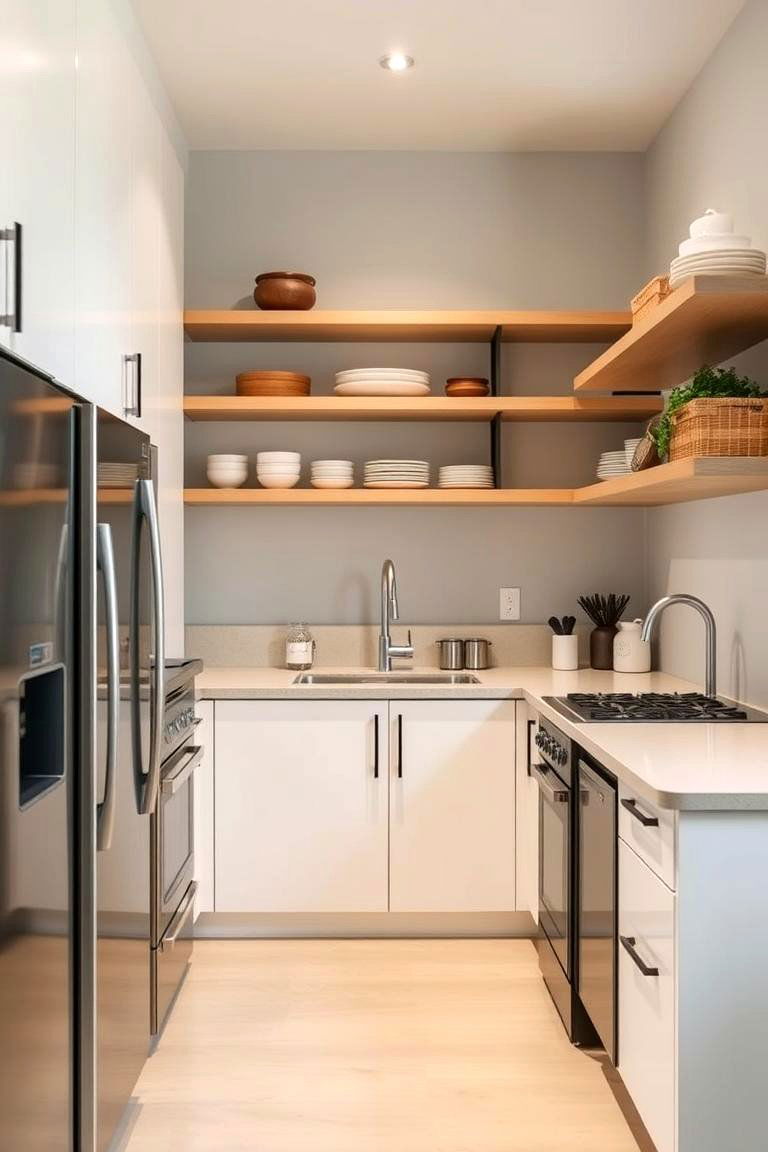
Glass and mirrors are key materials in minimalist interior design due to their ability to reflect light and create a sense of openness. Incorporating glass furniture, such as a coffee table or shelving units, can add a touch of elegance without crowding the space. Similarly, mirrors can visually expand a room, making it feel larger and brighter. Whether it’s a large mirror on a wall or glass accessories, these materials maintain the clean aesthetic while helping to maximize natural light and visual flow throughout the space.
12. Incorporate Minimalist Art
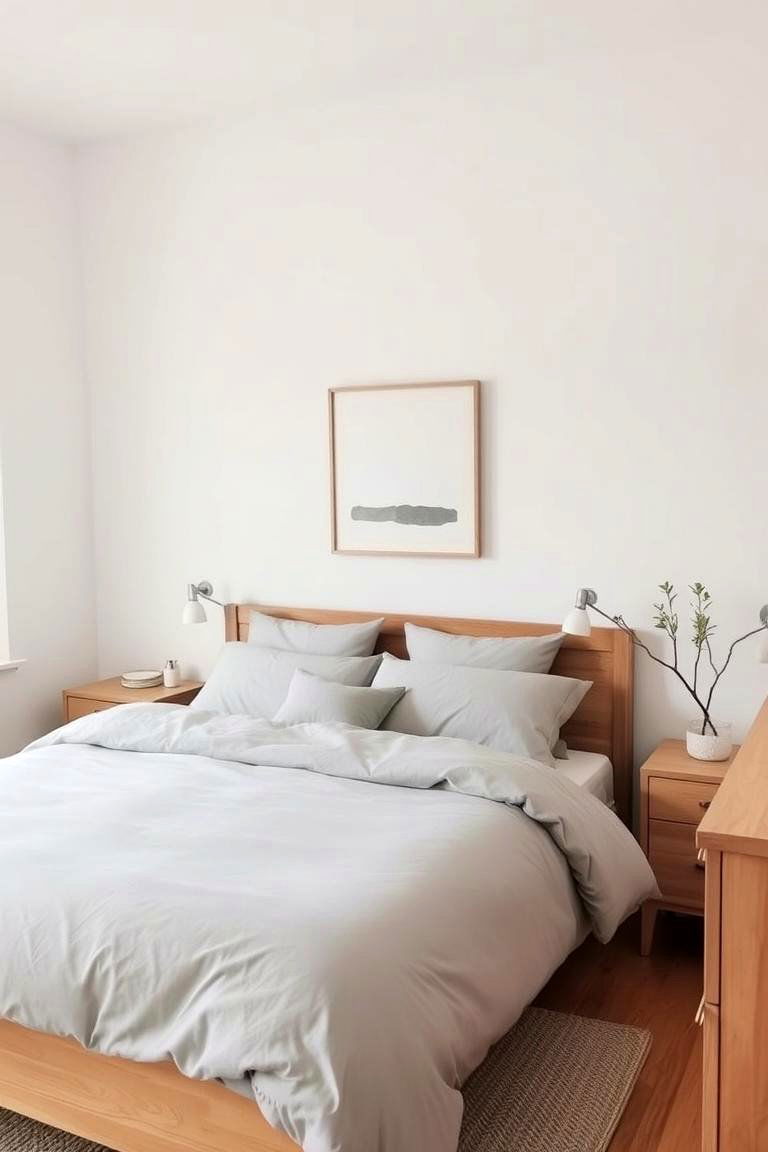
Artwork is an essential element in any home design, but in a minimalist space, it should be simple, understated, and strategically placed. Consider large-scale paintings, black-and-white photography, or abstract pieces that draw the eye without overwhelming the room. The focus should be on creating an emotional connection with the artwork rather than filling the walls with excessive decoration. Minimalist art complements the overall aesthetic of the space, adding personality and style while preserving the calming, uncluttered environment.
13. Focus on Functional Lighting

Lighting is an important aspect of minimalist design, where function meets style. Opt for simple, streamlined light fixtures that provide ample illumination without taking up too much visual space. Pendant lights, track lighting, and recessed lighting can help create a clean look while ensuring your rooms are well-lit. Focus on using light fixtures that highlight specific areas, such as task lighting for a workspace or soft ambient lighting for the living room. Lighting can transform the atmosphere of a room, so choose fixtures that align with the minimalist aesthetic.
14. Limit the Use of Patterns

In minimalist design, patterns should be used sparingly to avoid overwhelming the space. Stick to subtle patterns, such as simple stripes, geometric shapes, or organic textures, rather than busy, intricate designs. Minimalist spaces thrive on clean lines and straightforward compositions, so keep patterns to a minimum and let the overall design speak for itself. When used thoughtfully, patterns can add depth and interest without disrupting the overall balance of the room.
15. Opt for Neutral Flooring
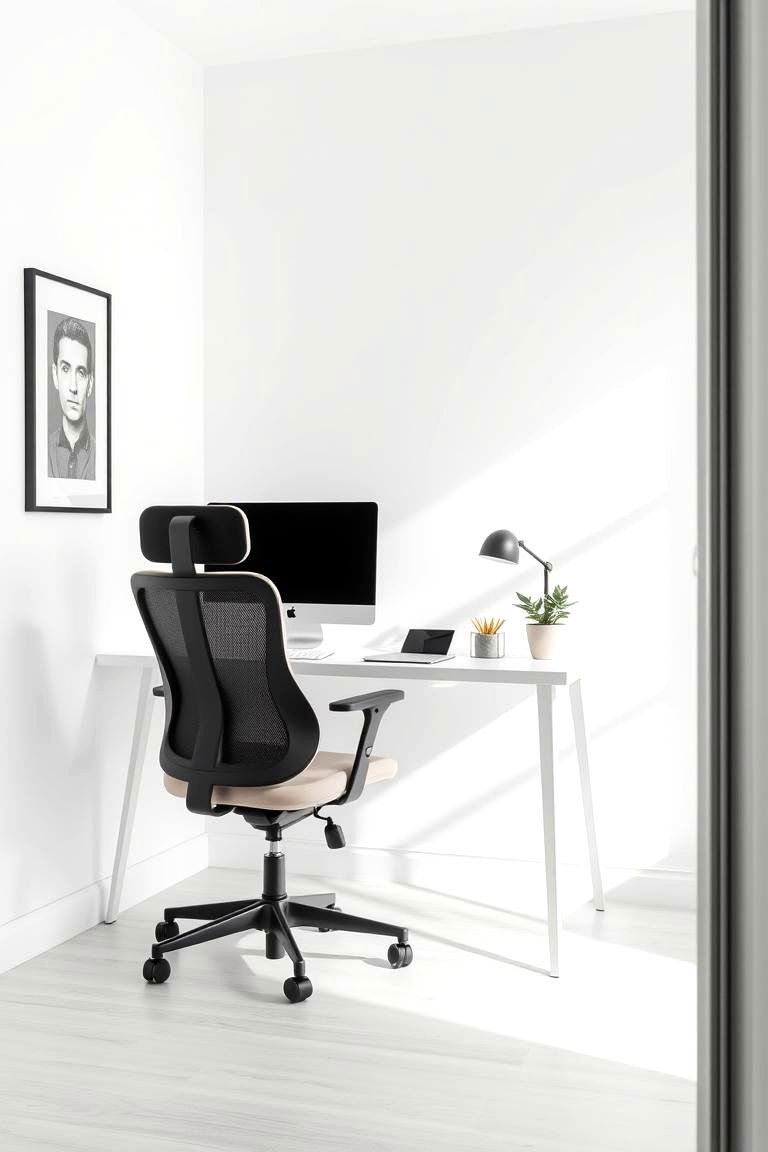
The right flooring can set the foundation for a minimalist interior design scheme. Neutral flooring materials, such as light hardwood, polished concrete, or natural stone, work well in minimalist spaces because they provide a neutral base that complements other design elements. These materials create a calm, uniform look and can easily blend with various color schemes and furniture styles. Neutral flooring also helps maintain the openness and airiness of a minimalist space, allowing your décor to shine without distractions.
16. Choose Simple Window Treatments

When selecting window treatments for a minimalist home, opt for simple, functional designs. Sheer curtains or plain blinds in neutral tones allow plenty of natural light while offering privacy. Avoid heavy, ornate drapery that can clutter the room and detract from the minimalist aesthetic. Simple window treatments help maintain the clean lines and airy feel that are key to minimalist design while still offering practical functionality.
17. Minimalist Kitchen Design

A minimalist kitchen focuses on efficiency, cleanliness, and simplicity. Opt for clean, flat-front cabinets, sleek countertops, and simple hardware. Avoid excessive décor or clutter, and instead, keep countertops clear with essential items neatly stored away. Use neutral tones like whites, greys, or natural wood to create a calm and modern atmosphere. The focus in a minimalist kitchen is on functionality, with every element serving a purpose without unnecessary adornment.
18. Streamlined Bathroom Fixtures

Minimalist bathrooms embrace simplicity, clean lines, and functionality. Choose sleek fixtures, such as a floating vanity, a frameless shower, and simple faucets. Keep décor to a minimum and opt for neutral colors like whites, greys, or natural stone. The key is to create a space that feels open, uncluttered, and spa-like, where every detail contributes to a calming and refreshing experience. Streamlined bathroom fixtures enhance the minimalist aesthetic and promote a sense of serenity.
19. Use Modular Furniture

Modular furniture is a perfect choice for minimalist interiors due to its adaptability and space-saving features. Modular pieces, such as sofas or shelving units, can be rearranged or customized to fit your specific needs. This flexibility allows you to maintain a clutter-free environment while adapting the furniture to suit different functions or layouts. By incorporating modular furniture into your design, you can create a minimalist home that evolves with your lifestyle.
20. Create Zen Spaces for Relaxation
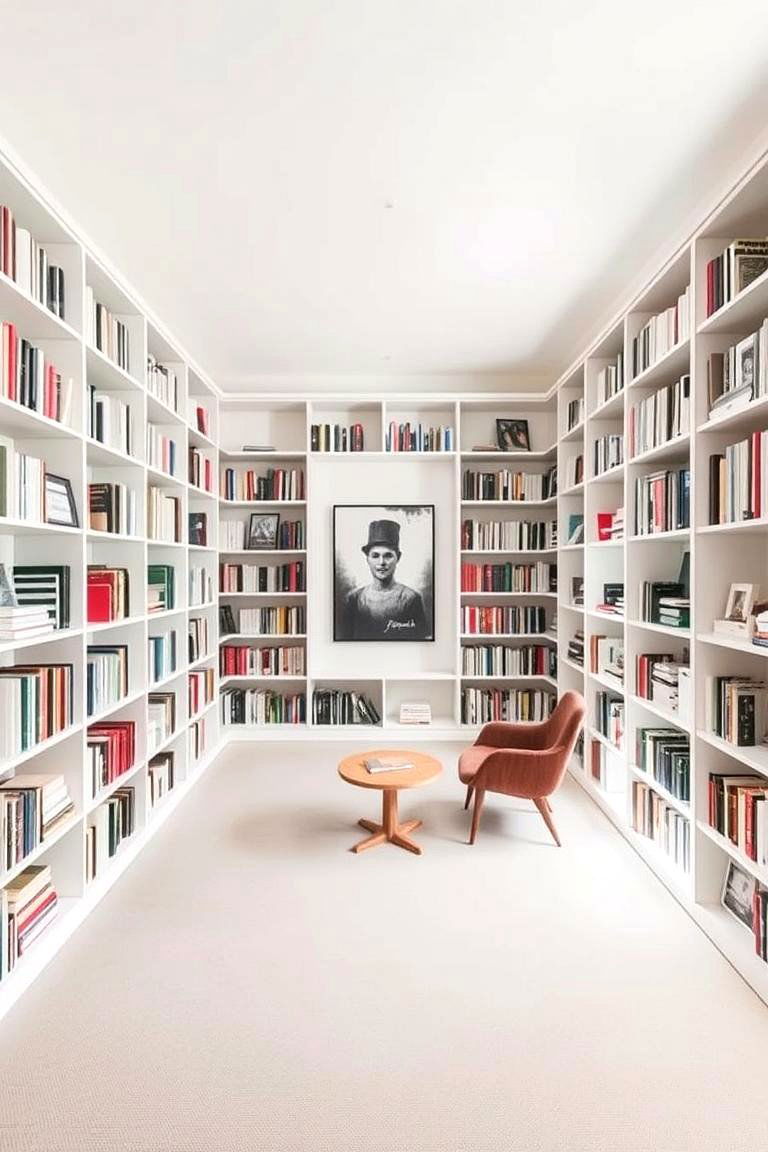
A minimalist design isn’t just about appearance – it’s about creating an atmosphere of peace and relaxation. Dedicate certain areas of your home as zen spaces for quiet moments of reflection or meditation. Use comfortable seating, soft lighting, and natural elements such as plants and stones to establish a tranquil, uncluttered environment. These spaces help you unwind and recharge, offering a refuge from the noise and busyness of everyday life.
21. Simplify Wall Decor

When it comes to wall décor in a minimalist home, less is often more. Opt for large, impactful pieces or a simple gallery of a few carefully chosen artworks. Avoid overcrowding the walls with too many pictures or decorative elements. The goal is to maintain an open, airy feel, allowing each piece of art to stand out without competing for attention. Simplified wall décor enhances the minimalist aesthetic while giving each piece the attention it deserves.
22. Embrace Open Shelving

Open shelving can be a functional and stylish addition to minimalist interiors. Rather than hiding everything behind cabinet doors, open shelving allows you to display carefully selected items in an organized and aesthetically pleasing way. Use open shelves to showcase your favorite books, plants, or decorative objects. The key is to keep the shelves clutter-free and well-curated, allowing only essential or meaningful items to be on display.
23. Create a Minimalist Entryway

The entryway is the first impression of your home, so it should reflect the minimalist design principles of simplicity and functionality. Use sleek, simple furniture such as a minimalist console table, a single mirror, and a storage solution for coats and shoes. Keep the space uncluttered and inviting, with clean lines and subtle décor. A minimalist entryway sets the tone for the rest of your home, offering a welcoming space that’s both practical and stylish.
24. Focus on Subtle Elegance

Minimalist design is all about subtle elegance. Instead of bold, attention-grabbing features, focus on creating a sense of refinement and sophistication through simple, elegant details. This could mean opting for high-quality materials, streamlined furniture, or carefully chosen décor pieces that evoke a sense of understated luxury. Subtle elegance creates a timeless and serene environment that feels both modern and inviting, making it the perfect style for a minimalist home.
Conclusion:
By embracing these 24 minimalist interior design ideas, you can transform your home into a haven of calm, simplicity, and style. Each idea highlights the importance of functionality, cleanliness, and thoughtful design, creating a space that feels both welcoming and peaceful. Minimalism isn’t just about reducing clutter; it’s about creating an environment that promotes clarity and balance. Incorporate these ideas into your home and enjoy the serenity that comes with a beautifully designed, minimalist space.


